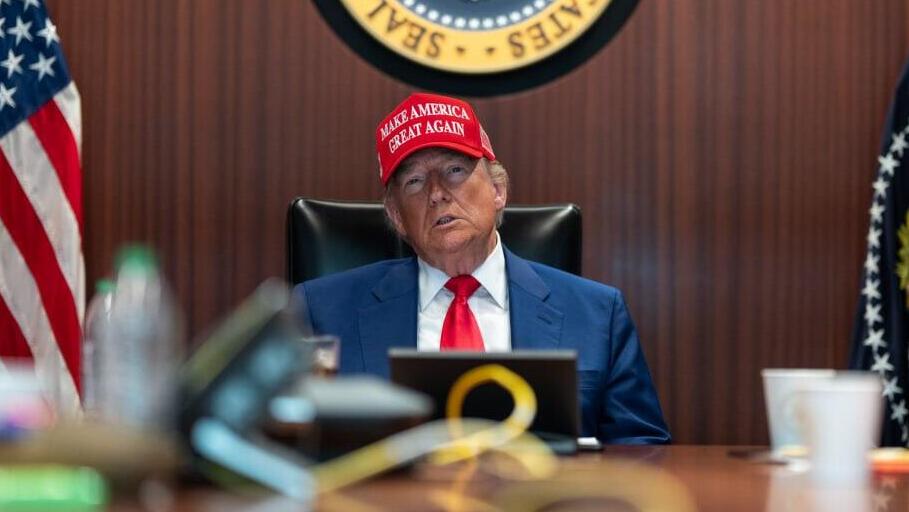The American strikes against Iran overnight mark a historic peak in the bilateral relationship between the U.S. and Israel, cementing the two nations as premier allies regardless of formal defense treaties. This paradigm shift carries profound implications: regional states now possess greater incentive to normalize ties with Israel, while a robust, intergenerational security framework for Israel has been established.
U.S. President Donald Trump in national adress after Iran strikes
(Video: The White House )
The sight of American and Israeli personnel – predominantly pilots – operating shoulder-to-shoulder under meticulously pre-coordinated plans signifies an enduring safety net for the Jewish state, one designed to persist beyond U.S. President Donald Trump’s administration.
A joint U.S. Central Command (CENTCOM) and IDF damage assessment concluded earlier strikes on Natanz and Isfahan nuclear facilities were only partially effective, with Iranian reconstruction possible within months to a year.
Consequently, the Israeli Air Force conducted a follow-up strike on Isfahan yesterday, while the U.S. allocated two additional Massive Ordnance Penetrator (MOP GBU-57) bunker-buster bombs to definitively destroy centrifuges in Natanz’s underground halls.
This revised strategy also explains the deployment of 12 GBU-57 bombs against Fordow, exceeding the initial single-strike plan, despite the U.S. possessing a limited stockpile of approximately twenty such weapons.
Trump has reiterated calls for Tehran to return to negotiations while simultaneously – without awaiting an Iranian response – fully committing U.S. forces to Israel’s campaign within Iranian territory, declaring "there are many targets in Iran."
Following this calibrated maneuvering, the critical tactical question is whether Trump will confine operations to nuclear sites or expand them to target ballistic missile launchers, production facilities and their associated command structures.
The scope of future U.S. action hinges on Iran’s response. Should Tehran execute threats to mine the Strait of Hormuz or attack U.S. bases and Sunni Arab Gulf oil infrastructure, Trump is prepared to unleash overwhelming air and missile power across Iran.
A pre-coordinated division of labor, developed in prior planning sessions between the IDF and CENTCOM under General Michael "Erik" Kurilla (whose tenure the Pentagon notably extended), stands ready for implementation.
Get the Ynetnews app on your smartphone: Google Play: https://bit.ly/4eJ37pE | Apple App Store: https://bit.ly/3ZL7iNv
Pre-strikre calculus and Trump's message
Overnight actions positioned the U.S. as a power willing to decisively employ military might when deemed necessary, embodying Trump’s "Make America Great Again" doctrine. Unlike the impulsive 2020 strike that killed Qasem Soleimani, this operation was preceded by a deliberate week-long construction of a "wall of legitimacy."
This framework provided military, moral, political and legal grounding for the strikes. Domestically, claims that Trump bypassed Congressional authorization were countered by his team’s argument that such approval is reserved for full-scale war declarations. Trump explicitly stated he is not initiating war but fulfilling a longstanding U.S. commitment – upheld by multiple presidents – to prevent an Iranian nuclear weapon.
He simultaneously extended an olive branch, urging Iran to negotiate. Addressing isolationist "America First" critics who argued Israel should conclude its own conflict, Trump justified intervention based on the same nuclear non-proliferation commitment, bolstered by recent claims from his officials that Israel’s strikes lacked sufficient effectiveness against hardened targets.
His post-strike speech, notably including religious gratitude likely aimed at evangelical supporters, reinforced this position. Significantly, the U.S. deliberately avoided providing Iran pretexts to attack Gulf Arab states. Striking aircraft did not launch from Al Udeid Air Base in Qatar, nor from bases in Saudi Arabia or the UAE.
2 View gallery


B-2 bomber, U.S. President Donald Trump, Fordow nuclear site
(Photo: U.S. Air Force, AP Photo/Evan Vucci , Google Earth, Youtube)
Instead, they flew direct from the U.S. mainland or from submarines positioned approximately 650 km (400 miles) outside Iranian territory. Furthermore, the U.S. emptied its primary Qatari base of fighter jets three days prior, both denying easy targets and shielding Qatar from Iranian accusations of complicity.
A crucial element of this legitimacy strategy was Trump’s post-strike address. He framed Iran as the decades-long source of regional subversion and terror, asserting that a nuclear-armed Tehran posed an unacceptable threat to Middle Eastern and global stability.
Alongside military planning, Trump prioritized zero American casualties. Hours before the Fordow strike, Israel comprehensively destroyed several Iranian F-14 Tomcat fighters – potential threats to U.S. bombers.
Moreover, Trump waited for Israel to systematically degrade Iran’s broader air defense network, particularly around Fordow. Footage shows only ineffective anti-aircraft artillery (incapable of reaching high-altitude stealth bombers) engaging; no surface-to-air missiles were launched.
Iran’s response is unlikely to be immediate. Characteristically, Tehran will deliberate extensively on its course. While a response driven by regime prestige and honor is almost certain, its nature will reveal whether Iran seeks closure or embraces a "Samson Option" confrontation. Consequently, the IDF’s Home Front Command has heightened alert levels, mandating citizen vigilance.
A possibility remains that Trump himself could seek closure by requesting Israel pause operations, offering Iran an off-ramp. Should such a request materialize – potentially pre-coordinated – Israel would likely comply, sharing an interest in swift de-escalation before deeper entanglement or unsustainable resource expenditure. The intensity and target selection of the past 24 hours underscore this Israeli interest.
Israeli strikes on Iranian F-14 jets
(Video: IDF Spokesperson's Unit)
However, it must be clearly said: not all vital targets required to cripple Iran’s ballistic missile, cruise missile and explosive drone threat for years were struck. Key figures within Iran’s "weapons group" targeted by Israel for removal remain active. The most critical element now is locating the 409 kilograms of uranium enriched to 60% that Iran has hidden.
This material forms the core for rapid nuclear program reconstitution or even a provocative shift, potentially enabling a "dirty bomb" to radiologically contaminate Israeli territory. Iran will likely fire missiles at Arab oil facilities and U.S. bases, while redoubling efforts against Israel. Only after this phase might negotiations commence.
Last night’s strikes in Khuzestan province, particularly around Dezful and Mahshahr, hold strategic significance. This region, heavily populated by a restive Sunni Arab minority, saw attacks near Dezful Air Base – a major facility posing a threat to U.S. aircraft en route to Fordow – and bases housing Revolutionary Guards units tasked with suppressing dissent.
Proximity to Iran’s largest dam adds another layer; its destruction would cause catastrophic flooding and severe water shortages across southwest Iran. These strikes signal Israel’s retained capacity for further escalation.






